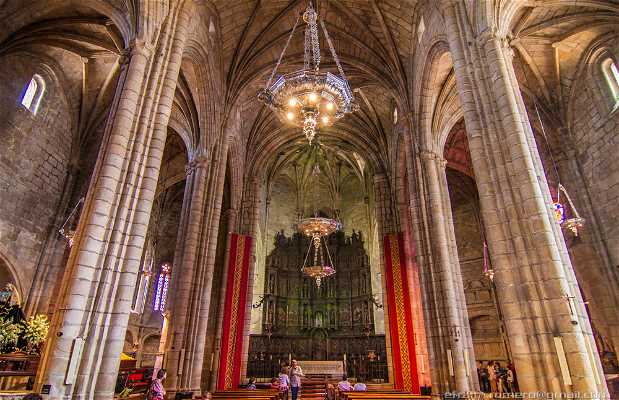Church turned Concathedral
The Santa María Concathedral presides over the Plaza of Santa María and the most important religious monument in the city. It was built in the Gothic style between the 15th and 16th centuries on the remains of a previous Romanesque structure from the 13th century. It was declared a Historic-Artistic Monument. The doorways are Gothic although some have Romanesque touches.
The most notable aspect of the exterior is the high 3-chamber bell-tower visible from around the city and which you can visit via an interior stairwell (which I’d recommend since the views are incredible). In the Plaza of Santa María, there’s a bronze statue of San Pedro de Alcántara by the sculptor Pérez Comendador.
The interior of the church is very spacious with high ceilings and a rectangular base with three chambers, pointed arches, and vaults. The most striking part is the altarpiece dedicated to the Assumption. It was made by Roque Balduque and Guillen Ferrant in the 16th century and is composed of un-polychromed cedar and pine. There are also three chapels worthy of mention: the Carvajal Chapel and its Baroque altar of the Archangel St. Michael from the 12th century, the Chapel of the Holy Sacrament, and the Chapel of the Black Christ (15th century). The church also features several Gothic sepulchers and an impressive organ made in 1703 by Manuel de la Viña.
To visit the Concathedral, you have to pay a 1€ entry fee. It’s open from 10:30 to 13:30 and from 17:30 to 19:30. If you want to visit the museum and the bell-tower terrace, you must pay 2€.
















